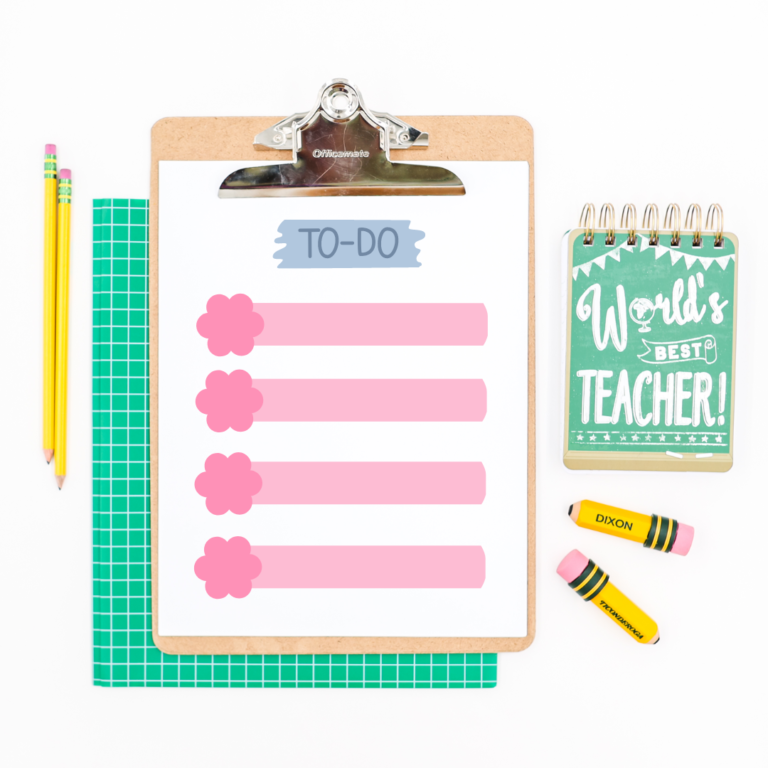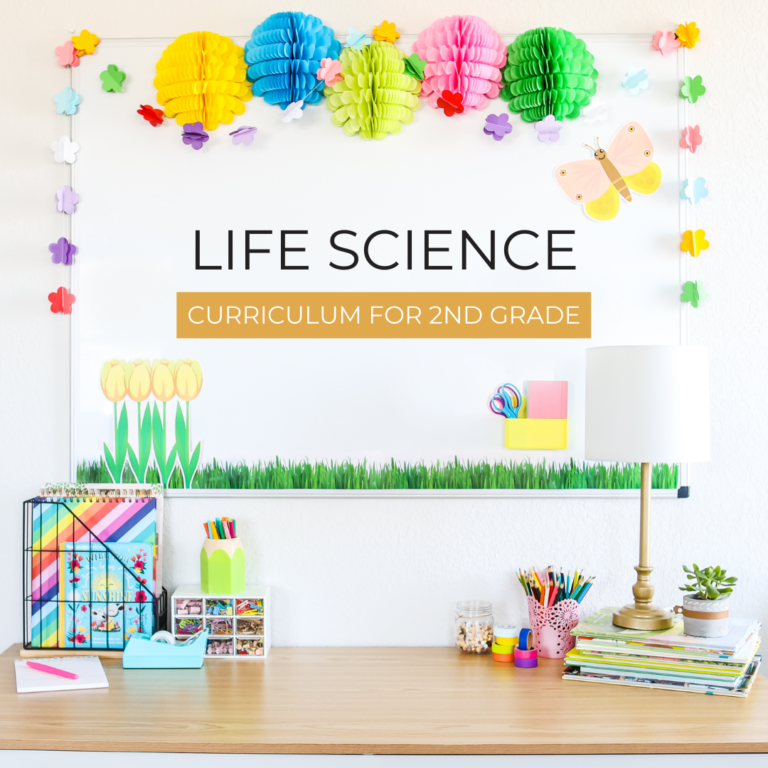Teaching Forms of Energy to 2nd Graders
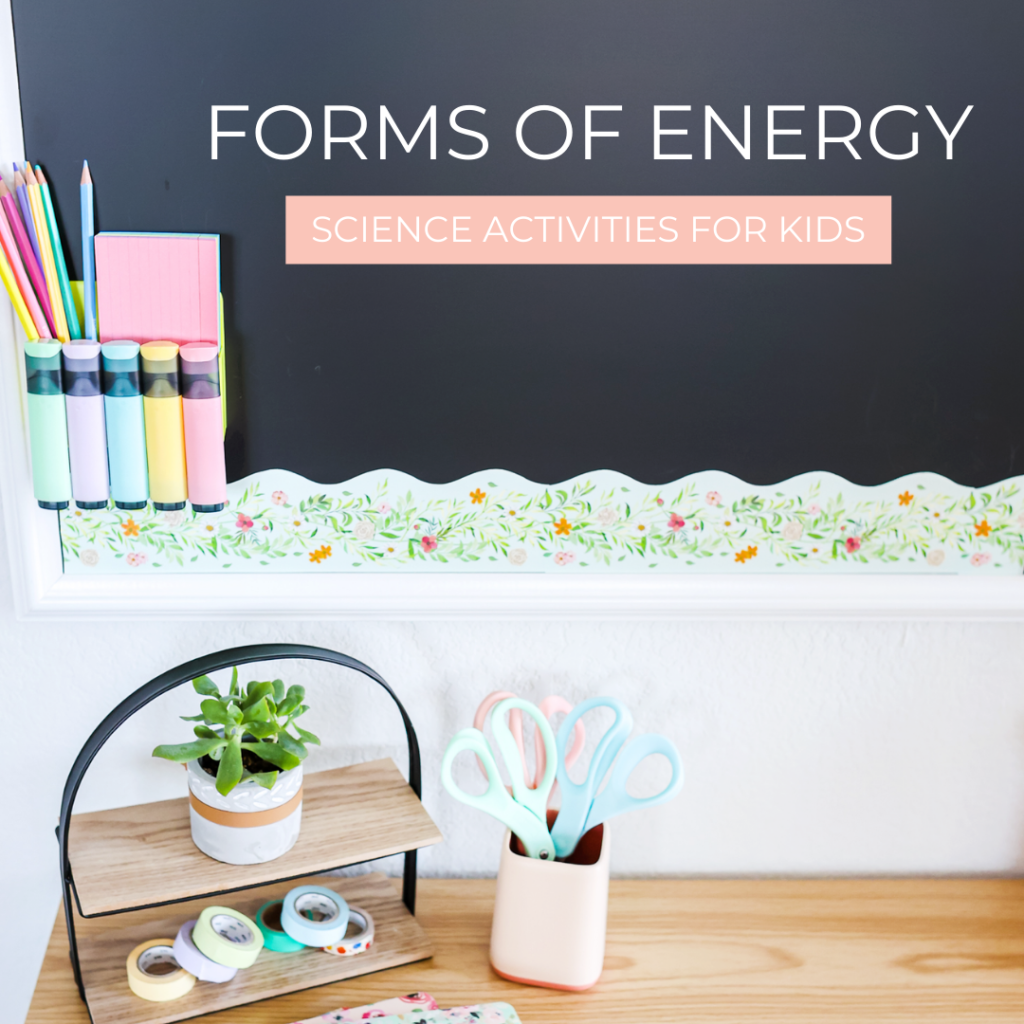
In elementary, students build on their understanding of the world by exploring different topics in science. There are so many connections and hands-on activities that students can take part in when teaching a 2nd-grade science curriculum. One unit I love teaching in 2nd grade is forms of energy. In this post, I will share with you ideas for teaching forms of energy to 2nd graders.
Ideas for Teaching Forms of Energy to 2nd Graders
Topics to cover:
- Different forms of energy; sound, light, and heat
- Identify objects that make sound, light, and heat
- Discover how heat transfers, light travels, and sound moves
- Discover how sound and light can travel through objects
- Identify volume and pitch
1. Teaching Forms of Energy: Introduction
A great way to introduce students to a topic on forms of energy is by showing them a video or reading a book. I also like to make anchor charts when I teach my class about forms of energy.
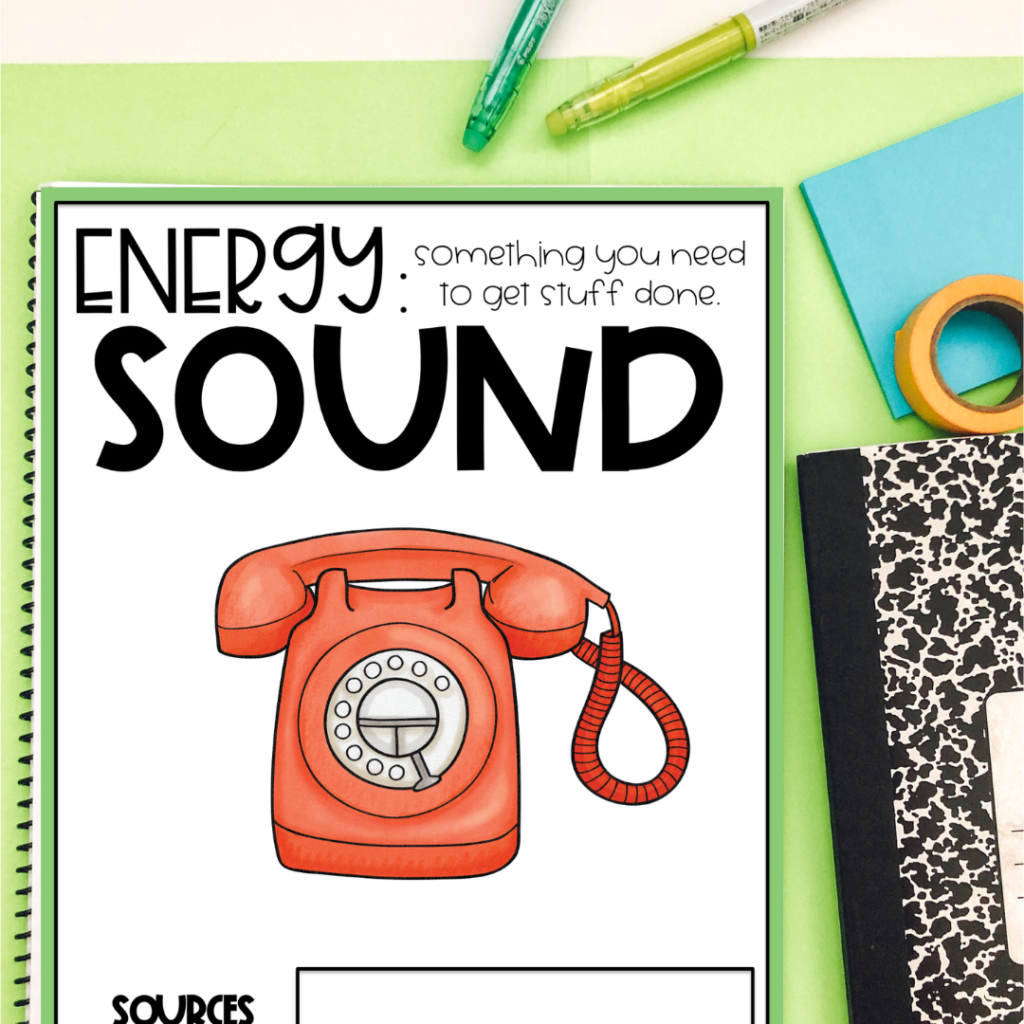
Making anchor charts with your class is a great way for students to share what they know and also what they are excited to learn about.
2. Identify Objects that Make Sound, Light, and Heat
The first activity I have my class do when teaching about energy is to identify sources of sound, light, and heat. Taking a nature walk or scavenger hunt around the school building is certainly a great way to collect ideas about where energy comes from.

3. Investigate How Heat Transfers
When teaching students about energy, it’s important to talk about how energy moves. Heat is made by small atoms and molecules that move quickly. Once heat is created, it can be measured by its temperature.
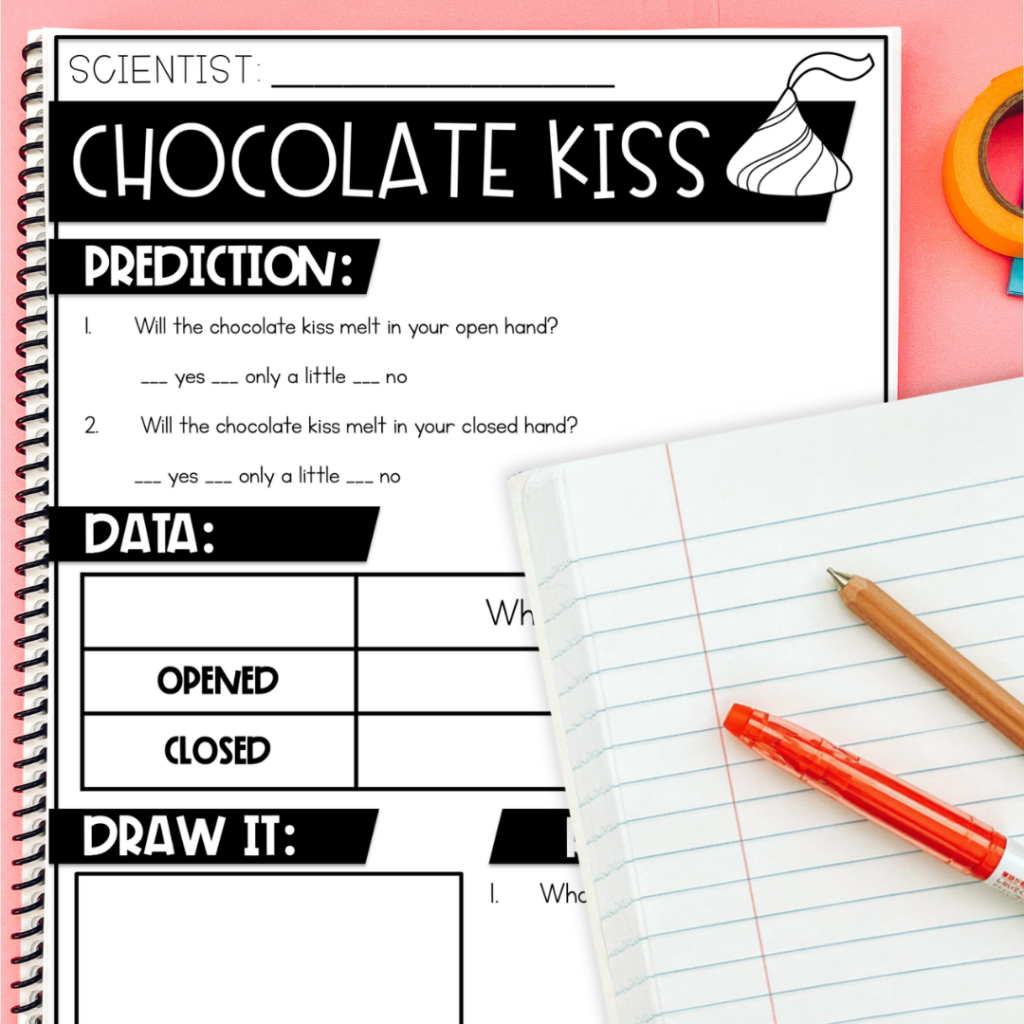
A particularly fun activity to show students how heat is transferred from one object to the next is by teaching students about body heat. Simply explain to students that our bodies produce heat because it is boring energy all the time. Then, give students a piece of chocolate and have them hold it tightly in their hand. They will see that the heat from the body moves through the chocolate and melts it. This messy and fun experiment is easy and especially engaging for your little learners.
4. Investigate How Light Travels
Light travels in waves. Light also travels in a straight path called a light ray. A fun way to teach students about light rays is by using flashlights, note cards, and a hole puncher. This activity is also very low-prep and requires little material on your part.

What you will need:
- 3 index cards
- Hole puncher
- Small balls of modeling clay or sticky tack
- Flashlight
Getting Started:
- Take the 3 index cards and poke a hole in the center of each card. (be sure that they are all in the same place.
- Next, take the clay or tape and place the cards so that they are standing up.
- Make sure that the cards are standing at an equal distance from each other. Be sure to place them where the holes line up.
- Turn off the lights and turn on your flashlight.
- Shine your light on the cards.
- Place the cards so that the light shines through all three holes.
- Move one of the cards at the end to show how the light stops and does not bend around the cards.
5. Investigate How Sound Is Made While Teaching Forms of Energy
Sound also moves in waves and is created by vibrations. A fun way to teach students about sound is by having them create different types of vibrations. By investigating different ways to make sound, students will see that they can control how loud or soft something is.

What you’ll need:
- A rubber band
- A ruler
- A lab report.
Directions:
- Place students in small groups or with a science partner.
- Give students the lab report and walk them through the directions.
- Have your students work with the different materials to create different vibrations. While they create different sounds, have them record what they observe on the recording sheet.
6. Explore Objects that Light Can Travel Through
Next, I have students investigate what objects light can travel through. In this experiment, students learn the difference between materials that are transparent, translucent, and opaque.
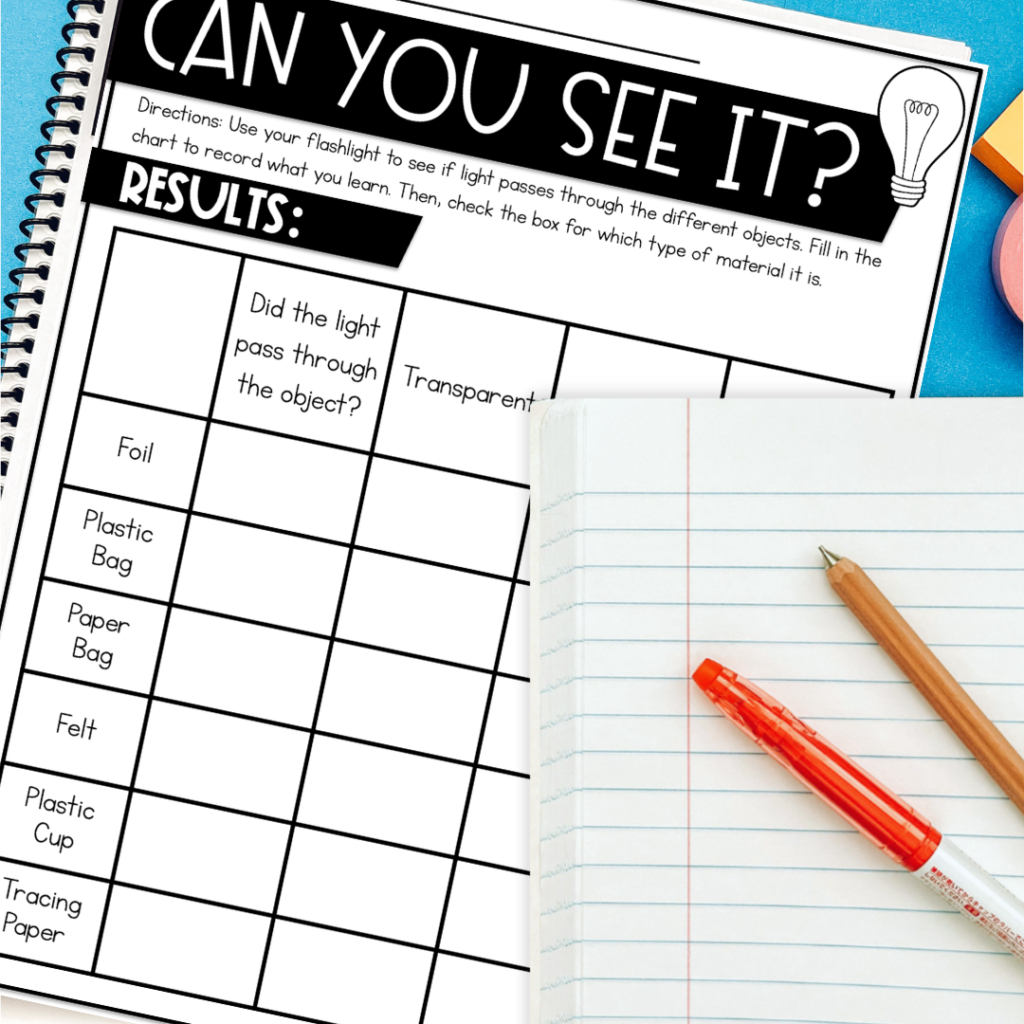
What You’ll Need:
- Foil
- Plastic bag
- Paper bag
- Felt
- Plastic cup
- Tracing paper
- Flashlights
- Lab sheet
Directions:
- Pass out the lab reports.
- Give each group a flashlight.
- Wrap foil around the light of the flashlight and poke holes in the foil to make light beams.
- Turn the lights off in the room.
- Have students explore which materials light passes through and record their observations on the lab report.
- Discuss answers when everyone is done.
7. Explore Objects that Sound Can Travel Through
I don’t know about you, but my kiddos love any opportunity they get to talk in the classroom. Let them talk all they want, with a fun game of telephone! This experiment will teach students that sound can travel through different mediums.

What You’ll Need:
- Two plastics cups
- String
- Scissors
- Lab sheet
Directions:
- Use a pencil to poke a hole in the center of two plastic cups.
- Cut a piece of string that is about 10 to 15 feet long.
- Thread the end of the string through the cups.
- Tie the ends of the strings in knots so they don’t fall through the hole.
- Have both children walk until the string is tight.
- One child holds the cup to their ear, and the other child whispers loudly into their cup.
- While the students are holding the cups, ask them the following questions.
- What happens if you pinch the string between the two cups?
- What happens if the string between the cups isn’t pulled as tight?
- How do you think the sound travels?
- What object is the sound traveling through?
- When you are done working through the questions with the class, have your class draw a picture of their telephone. Make sure to help them understand that the sound travels along the string and must have a medium to travel through.
8. Investigate Volume and Pitch While Teaching Forms of Energy
Another topic that I cover in my unit on teaching forms of energy to 2nd graders is pitch and volume. Volume is how loud or soft a sound is, while pitch is how high or low a sound is. In this fun experiment students will get to make music while learning about volume and pitch.

What you’ll need:
- Glass cups all the same size
- Water
- Metal spoon
- Food coloring (optional)
- Lab sheet
Directions:
- Take empty glass jars and set them in a straight line on a flat surface like a table.
- Then, gently tap the glasses with a spoon. Ask students what they notice about the sounds. (The sounds should all be the same.)
- Pour water into each glass. Make sure each glass has a different level of water.
- Add food coloring to make it easier to see the different levels of water. (optional)
- Use the metal spoon to tap each glass. Listen carefully to how the pitch changes.
- Have your students work with the different materials to create different vibrations. While they create different sounds, have them record what they observe on the recording sheet.
- When they are done, make sure to explain to students that the more water in the glass makes it harder for the glass to vibrate, so it creates a lower pitch.
Teaching Forms of Energy in 2nd Grade: Make a Science Journal!
Teaching forms of energy to 2nd grade can be a ton of fun, especially with the right activities and hands-on experiments. Keep track of what your students learn by making a notebook where they can record their thoughts and ideas.
More Experiments and Lesson Plans for Teaching Forms of Energy
Overall, our forms of energy science unit really gets students thinking about how we use energy every day. It’s great for giving a visual representation and helping students learn through hands-on experiments.

These forms of energy science experiments are part of a complete Forms of Energy unit for 2nd grade that is also available in a 2nd-grade physics science notebook bundle.
Click here to see the yearlong 2nd grade science series.
Don’t forget to pin this post to refer back to during your planning time!
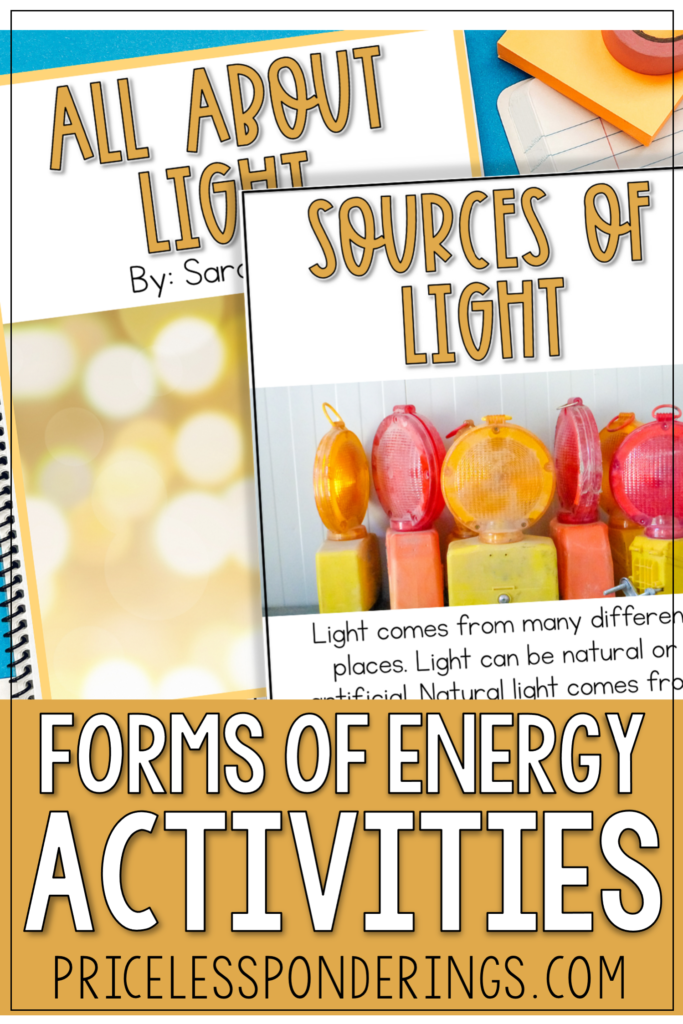
For More Science Activities, Visit These Posts!
FORMS OF ENERGY ACTIVITIES FOR KIDS
SOUND ENERGY: SCIENCE ACTIVITIES FOR KIDS




